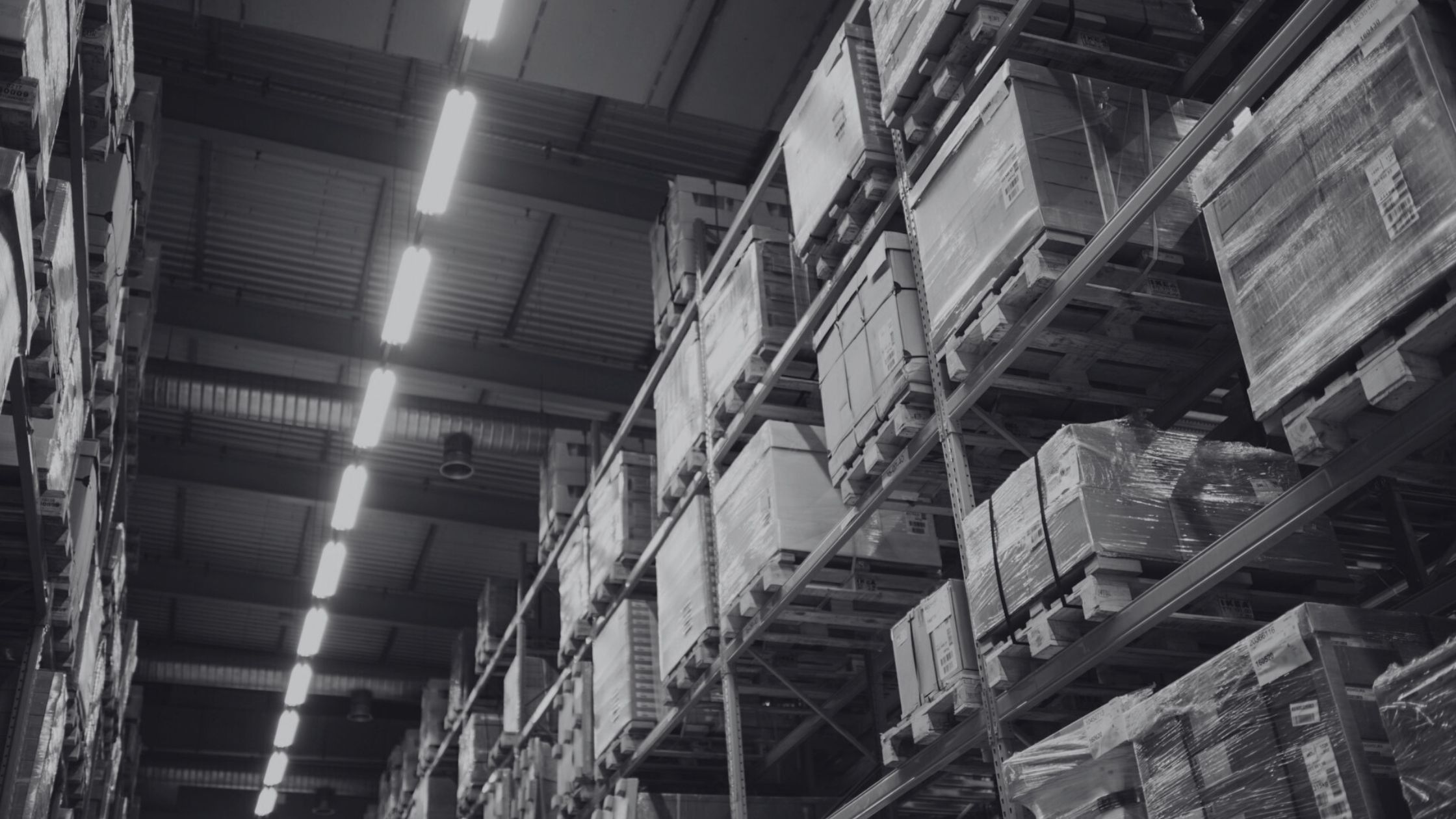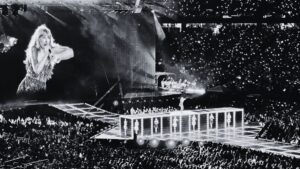For a long time, big fulfillment centers dominated the retail industry. These large distribution centers (DCs) are built and operated to ship products to stores. In recent years, however, the retail industry has faced major changes in customer behavior, expectations, budget, and impact of the COVID-19 pandemic. To adapt, retail operations are shifting away from these large centers to a more localized approach.
By having retail stores double up as fulfilment centers, those stores capture the demand of the local area regardless of whether the consumer is online or offline. With this approach, physical stores no longer compete against ecommerce – so where businesses can do this, I think they should.
Matt Taaffe, VP of Product at pass_by
Jump to:
- Key stats
- Retail fulfillment of online orders
- How the pandemic changed retail fulfillment
- The age of q-commerce
- Fast food and delivery services
- Benefits of Q-commerce
- New challenges of retail fulfillment
- How retail fulfillment is going local
- What retailers are doing in store
See how retail trends are shaping each year, month on month, in our Retail Pulse report. Our analysis uses data with the highest in market accuracy – 94% correlation to ground truth, over 15 data inputs, and a full 90 days of predictive feeds.
Key stats shaping the state of retail fulfillment
Why are these changes happening? There are a lot of reasons why retail operations is changing – chief among them is the rise of e-commerce and Q-commerce, shipping costs, and consumer demand for fast shipping times.
- Decentralized fulfillment can reduce delivery times by up to 50%
- Local fulfillment centers can reduce shipping costs by 25%
- In-store fulfillment can increase store foot traffic by 30%
- 40% of retailers have integrated their e-commerce and physical store operations
Read more: The future of shopping malls
Retail fulfillment of online orders
53% of Americans have ordered from Walmart in the past year, according to Statista Consumer Insights (2023). This significant figure underscores the broader trend: retailers are increasingly leveraging their existing store networks to serve as local fulfillment centers.
Rather than relying on centralized warehouses, businesses like Walgreens are decentralizing their operations, moving e-commerce fulfillment closer to the customer.
Why the shift? For starters, strategically siting fulfillment centers near customers allows for shorter delivery times. It’s all about speed and convenience in today’s fast-paced retail environment. By transforming individual stores into micro-fulfillment hubs, retailers reduce transportation expenses.
Businesses that harness data analytics can make informed decisions to streamline these operations effectively. With insights gleaned from analytics, companies can better manage their supply chains, adapting to ever-changing consumer habits and preferences.
By embracing micro-fulfillment, companies gain a significant competitive advantage—providing faster, more reliable delivery services that resonate with today’s consumers. This approach is not limited to grocery chains; it applies across various retail sectors including convenience, drug stores, general merchandise, and department stores.
How the pandemic changed retail fulfillment
The COVID-19 pandemic changed how retail functioned as customers could no longer shop as they used to in store. Since the pandemic started, online sales in the U.S. jumped 49% .
Customers looked for convience and still wanted to purchase their favourite products. When online delivery to the doorstep wasn’t convienient or fast enough, curbside pickup was a favorite option for many consumers. During the pandemic, curbside pickup increased by over 200%.
Rather than relying solely on vast, centralized warehouses miles away from the customer, retailers are increasingly using their existing physical stores as micro-fulfillment centers (MFCs). By doing so, they achieve a decentralized approach to e-commerce fulfillment, making the most of the space and stock already present in local stores.
This shift offers numerous advantages for both retailers and consumers. Shoppers enjoy faster delivery times and potentially lower costs. Now when you place an online order, it’s likely coming from a nearby store, shortening the time it takes to reach your doorstep. Not only does this approach provide convenience, but it also contributes to a smaller carbon footprint due to reduced transportation distances.
See how retail trends are shaping each year, month on month, in our Retail Pulse report. Our analysis uses data with the highest in market accuracy – 94% correlation to ground truth, over 15 data inputs, and a full 90 days of predictive feeds.
The age of Q-commerce
Q-commerce (quick commerce) or on-demand delivery brings an order to the customer in less than 30 minutes. Instead of waiting days for an order to arrive, the essence of Q-commerce lies in its promise of ultra-fast delivery times, sometimes within minutes of placing an order. This is made possible through advanced logistics, robust supply chain infrastructure, and a strategic network of micro-fulfillment centers (MFCs).
Big players in the market include companies like Delivery Hero and Gorillas. The former reported 400% year-on-year growth (for comparison, Apple’s is around 11% ) and the latter raised €245 million in their Series B funding round, leading to a $1 billion valuation that turned the company into a unicorn just 9 months after its inception.
Unlike traditional e-commerce that leverages large, centralized warehouses, Q-commerce employs these smaller, decentralized locations to fulfill orders quicker. This approach significantly trims down delivery windows and boosts customer satisfaction. Companies like Instacart, Amazon, and FourKites are leading the charge, implementing cutting-edge technologies to optimize every step of the supply chain.
Retailers successfully integrated micro-fulfillment into their operations, underscoring the trend’s viability and effectiveness. Businesses have transformed how they manage inventory and dispatch orders, achieving remarkable gains in speed and efficiency.
As consumer expectations for immediate delivery escalate, Q-commerce isn’t just an option—it’s becoming a necessity for staying competitive in the retail landscape. Micro-fulfillment centers are more than a logistical improvement; they represent a fundamental shift toward a more agile, responsive, and customer-centric approach to retail.
Read more: How AI is Helping Retailers Stay Competitive
Fast food and delivery services
Companies like Uber Eats and Deliveroo partner with supermarkets to deliver food and groceries within the hour. These fast delivery services offer customers flexibility and give companies a strong local market base,
leveraging existing relationships with stores to minimize logistical challenges. By turning local stores into micro-fulfillment centers, companies can streamline their operations and stay competitive in an increasingly fast-paced market.
This localized approach not only caters to the immediate demands of consumers but also reduces transportation expenses and environmental impact by cutting down on long-distance shipping. Additionally, it strengthens supply chain resilience by mitigating disruptions that could arise from global events.
Read more: Most Popular Fast Food Chains in America
Benefits of Q-commerce
Q-commerce, or quick commerce, revolutionizes the way consumers experience online shopping. By leveraging speedy delivery services, often within an hour or two, Q-commerce meets the modern consumer’s demand for immediacy. But the benefits don’t stop there.
For retailers, embracing Q-commerce can translate into increased customer satisfaction and loyalty. Imagine your loyal clients knowing they can rely on your store for last-minute needs, whether it’s groceries, over-the-counter medication, or even a forgotten birthday gift.
This new model also supports higher sales volumes. Because the faster customers can get their hands on their purchases, the more likely they are to buy more frequently. Q-commerce allows retailers to stand out in a fiercely competitive market by offering a unique value proposition that many brick-and-mortar stores can’t match.
Operational efficiency is another compelling advantage. Utilizing existing retail locations as micro-fulfillment centers (MFCs) minimizes the need for large, off-site warehouses and reduces overhead costs. This decentralized approach not only speeds up delivery times but also enhances the retailer’s ability to adapt to local demand fluctuations quickly.
New challenges of retail fulfillment
However, this strategy isn’t without challenges. Managing stock across multiple locations and ensuring timely replenishment require robust technological solutions and efficient collaboration with suppliers. Retailers must leverage advanced inventory management systems and real-time data analytics to optimize their operations continuously.
In embracing this local fulfillment model, retailers not only improve operational efficiency but also forge stronger relationships with their customers, delivering on the promise of quick and reliable service.
How retail fulfillment is going local
Micro-Fulfillment Centers (MFCs) are often placed in densely populated urban areas, which currently account for 56% of the world’s population, according to ABI Research.
In short, retailers are looking at ways to speed up the supply chain, meet consumer demand, and reduce costs. But how are retailers doing this? We could say it’s micro fulfillment centres are leave it at that, but it’s a little more complicated.
Micro fulfillment centers, or MFCs, have emerged as agile solutions tailored to modern retail demands. Let’s explore a few common types:
1. In-Store MFCs: These MFCs are integrated directly into existing stores. By converting a section of the store into a fulfillment hub, retailers can leverage their current real estate and enable quicker order processing. This type also benefits from an already established supply chain, reducing the need for additional logistics.
2. Standalone MFCs: Standalone MFCs are independent facilities located close to dense urban areas. These compact warehouses are designed to minimize the distance between products and consumers, accelerating delivery times. They often employ advanced automation to efficiently manage inventory and order assembly.
3. Dark Stores: Operating as traditional stores that have been converted into dedicated fulfillment centers, dark stores do not serve walk-in customers. Instead, they are optimized strictly for order picking and packing, enabling retailers to quickly and effectively meet online demand.
4. Pop-Up MFCs: These temporary MFCs provide flexible solutions for retailers facing seasonal demand spikes or embarking on market testing. Pop-up MFCs can be quickly deployed and scaled based on customer needs, offering a dynamic approach to inventory management and distribution.
Each type of micro fulfillment center offers distinct advantages, allowing retailers to choose the best fit for their specific operational requirements and consumer expectations.
What retailers are doing in store
40% of retailers have integrated their e-commerce and physical store operations. Many retailers are transforming their stores into dual-purpose spaces, functioning both as traditional shopping locations and local fulfillment centers. Walgreens, for instance, has integrated Micro-Fulfillment Centers (MFCs) into numerous store locations, ensuring that online orders can be picked and packed efficiently within the existing retail space. This approach not only maximizes the use of their store footprint but also drastically reduces delivery times for nearby customers.
Retailers are also embracing advanced technologies to enhance their in-store fulfillment processes. Instacart, for instance, has partnered with numerous grocery chains to offer efficient home delivery services through the use of MFCs. These partnerships enable faster order processing and more accurate inventory management, which are crucial for meeting customer expectations.
The shift towards local, store-based fulfillment is driven by the need to adapt to changing consumer habits. As more shoppers turn to online purchasing, the ability to provide fast, convenient, and reliable delivery services becomes a significant competitive advantage. Retailers who strategically place their fulfillment centers closer to customers can achieve shorter delivery times, lower transportation costs, and reduce their environmental footprint, appealing to the growing demand for sustainability.
See how retail trends are shaping each year, month on month, in our Retail Pulse report. Our analysis uses data with the highest in market accuracy – 94% correlation to ground truth, over 15 data inputs, and a full 90 days of predictive feeds.





